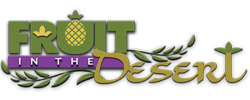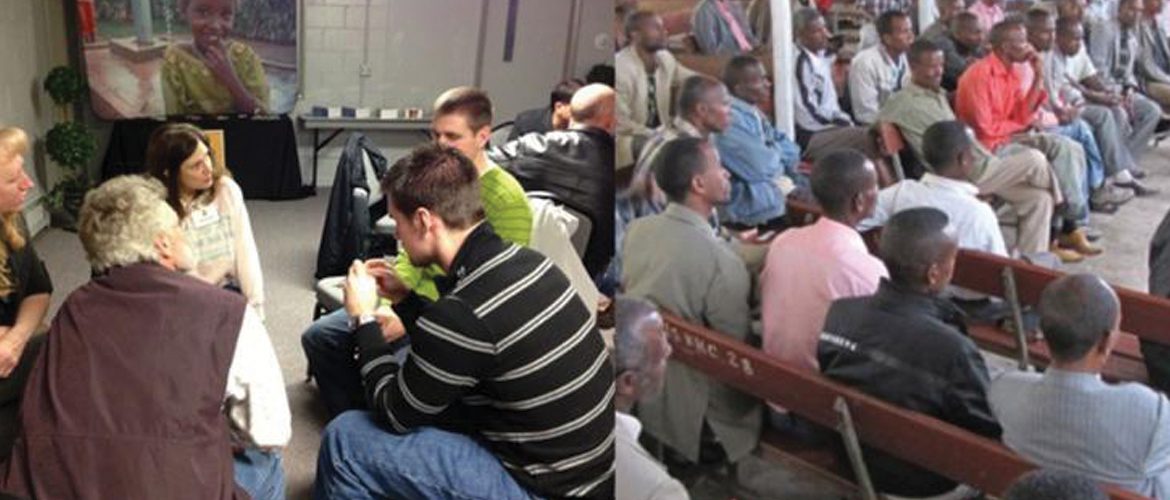By Diane Howard, Ph.D.
For many of us in the Western world that have a clean and plentiful water supply, it’s hard to picture the life-and-death struggle that is faced on a daily basis by those who live in various parts of our world where water is scarce and polluted. Jerry N. Wiles, who has been reaching those among the 70% of world who are oral learners with water and the Word for many decades serves in places like these with the least access to water and whose citizens are among the 80-90% of the people who primarily learn orally.
 Wiles has been widely recognized around the world for his involvement in outreach strategy development. His innovative and highly effective personal evangelism style has been acclaimed by a broad spectrum of church leaders. He is heard daily on the KHCB Radio Network, as well as on several other media outlets. His program “Winning Others to Christ” has been broadcast in 174 countries around the globe. He has also been a frequent guest on radio and television talk shows, as well as a prolific public speaker, as he has extensively traveled.
Wiles has been widely recognized around the world for his involvement in outreach strategy development. His innovative and highly effective personal evangelism style has been acclaimed by a broad spectrum of church leaders. He is heard daily on the KHCB Radio Network, as well as on several other media outlets. His program “Winning Others to Christ” has been broadcast in 174 countries around the globe. He has also been a frequent guest on radio and television talk shows, as well as a prolific public speaker, as he has extensively traveled.
He is the author of several books, the most recent being “No Greater Joy: Power of Sharing Your Faith through Stories and Questions” (Whitaker House). I recently had the privilege of interviewing him.
DH: You are president emeritus of Living Water International (LWI), which is one of the world’s leading faith-based water solutions organizations now working in Asia, Africa, and Central and South America. How does this organization uniquely share God’s love around the globe?
JW: The organization exists to demonstrate the love of God by helping communities to acquire desperately needed clean water as well as to experience “living water”—the gospel of Jesus Christ—which alone satisfies the deepest thirst.
DH: You have served over many years on the boards of ministries and missions organizations. You are a paradigm pioneer in the orality movement and currently serve on the advisory council and the leadership team of the International Orality Network. How are Living Water and the Orality Movement linked?
JW: Living Water International works to answer physical and spiritual needs around the world by providing clean water to those who have none, and the Living Water to those who don’t know Jesus. Living Water International has found that oral storytelling is especially effective in presenting the life-giving message of the Gospel.
DH: How are your storytelling methods unique and effective?
JW: They are relational and communal. We use a bi-lingual translator for our contextual storytelling with a set of five stories, three from Mark and two from John. We use pre- and post-story dialogue. In most cases, we use basic stories; but in some cases song, dance, proverbs, reenactments might be used.
DH: Do you use Jesus Christ as a role model storyteller?
JW: Yes, we recognize that Jesus told stories and parables within the context of community and relationships. Our stories, like His, need to connect culturally.
DH: What goals do you have for your storytelling?
JW: Our goals include presenting stories to the hearing (which can include seeing) of listeners in ways they can understand, respond to, process in a community, remember, and reproduce.
DH: What is orality?
JW: The definition of the word is “a reliance upon spoken or non-written communication.” But within the scope of evangelism, orality is much broader. It’s a movement. Our main focus is on the Great Commission. It’s about communicating the Gospel and making disciples. In short, orality for LWI is sharing the Gospel by telling Bible stories through spoken word. Orality is getting back to the basics of Gospel sharing.
DH: Why is orality significant and effective?
JW: Compelling information spreads quickly by word of mouth. The Gospel, the most compelling news to any human, is no different. It’s also true that people using the orality method have a ready framework to share the Gospel, no matter where they are. We say you don’t have to be a great storyteller, because we have great stories to tell. So when we tell the stories—the true stories from the Word of God, the Holy Spirit speaks to people’s hearts and brings understanding and application and significant change. Basically, it has to do with the way that the majority of the people of the world learn and communicate—the people [who] can’t, don’t, or won’t read, or prefer to learn by means other than written instruction or print-based media. Further still, the orality movement enables people to quickly reproduce the Gospel message, so they can take it back to their friends, families, and communities. The orality movement really is not a new something as much as it is a rediscovery of old, ancient methods and principles that [have] just been neglected for the past few hundred years.
DH: Who benefits from orality methods?
JW: It’s easy to assume that orality is only appropriate for societies whose singular or primary form of communication is by mouth. But it would be a shame to miss the advantages it could bring in highly-literate communities. Families can use orality methods for family devotions. It works well with kids, questions, conversations around meals. Children enjoy learning with stories and like to tell them. Stories of women, such as that of the woman at the well, show how God values women, children. It has many applications. Anyone involved in communication and training could benefit from orality training. This includes people in executive coaching, for example, and professional leadership, leadership development, small business coaching, team-building, organizational development. Any of these people would learn the benefits of oral communication. Orality principles and methodologies apply to many different areas of our lives. It’s more relational. It’s more communal. We have business leaders now that are applying the orality methods and principles in their business settings, and they’re finding great results. It is useful with social justice issues.
LWI refers to its workshops as easy on-ramps to the orality movement which Wiles says “is really the Jesus movement–[not] the Jesus movement from the 70s in the U.S., but the original Jesus movement from 2,000 years ago.”
He encourages Christian to consider coming to a workshop, because orality is better experienced than explained. He says, “Our training is based on demonstration, participation, and explanation. Another feature that makes this work is learning a little, practicing a lot, and implementing immediately. Better to know a few stories we tell to a lot of people, than it is to know a lot that we keep to ourselves.”
The workshops are designed to help anyone who wants to share their faith. Wiles says, “The objective of this training is to equip and inspire and activate and mobilize ordinary followers of Jesus.” What makes this training effective is the focus on learning a little, practicing a lot, implementing immediately, and telling the stories often. Simplicity and reproducibility are important factors as well.
Jerry says, “We’re also collaborating with academic institutions and other mission organizations in developing a network of scholars, and researchers, theologians, missiologists with different areas of expertise. So we have a global think tank on these issues.”
Wiles states, “While many, especially in the West, are just now hearing about orality, it is, in fact, a significant breakthrough in the global mission movement. Some mission leaders are acknowledging that more people are coming to faith in Christ through orality-based methods than through Western, literate methods. The case can be made that orality is changing the face of church and missions around the world. The rapidly reproducing church-planting and disciple-making movements are taking place primarily among oral cultures.
In addition to storytelling, or storying, there are many different facets of Oral Arts. These include: chants, drama, song and dance, poetry, parables, proverbs and more. Throughout church history, there have been many other oral learner-friendly methods used such as creeds, confessions, and catechisms.
There have also been visual arts which have told stories such as architecture, icons, and stained glass windows. These have not been just for decoration, but also for communication and instruction. In addition to these methods, today we have radio, television, cell phones, the Internet, recording devices, and many other technological resources.
As valuable as the technological resources are, however, it is important training methods and strategies are not dependent upon technology. LWI’s basic Orality Training Workshop: An Introduction to Contextual Bible Storying is designed to help people on the journey of following Jesus. After people are on the journey, many other resources can be introduced, largely through the two thousand-member International Orality Network and the Global Orality Training Alliance.
Other important aspects in orality practices and training methods involve facilitating understanding of the receptor culture, worldview, and contextualization. Further, it is significant to give attention to language, learning preferences, and behavior change, as well as related disciplines such as sociology, psychology, anthropology, theology, epistemology, and other aspects of missiology.
Learn more about Living Water International and Orality at www.water.cc/orality and www.orality.net.

